This document compares proactive and reactive routing protocols in mobile ad-hoc networks. It classifies routing protocols as either proactive, which maintain routes at all times, or reactive, which determine routes on demand. Proactive protocols have lower latency but higher overhead, while reactive protocols have higher latency but lower overhead. The document evaluates the performance of AODV, TORA, and DSDV protocols based on packet delivery ratio, average end-to-end delay, and throughput under both CBR and TCP traffic patterns. Simulation results found reactive protocols had better packet delivery and delay, with performance varying based on node number and traffic type.

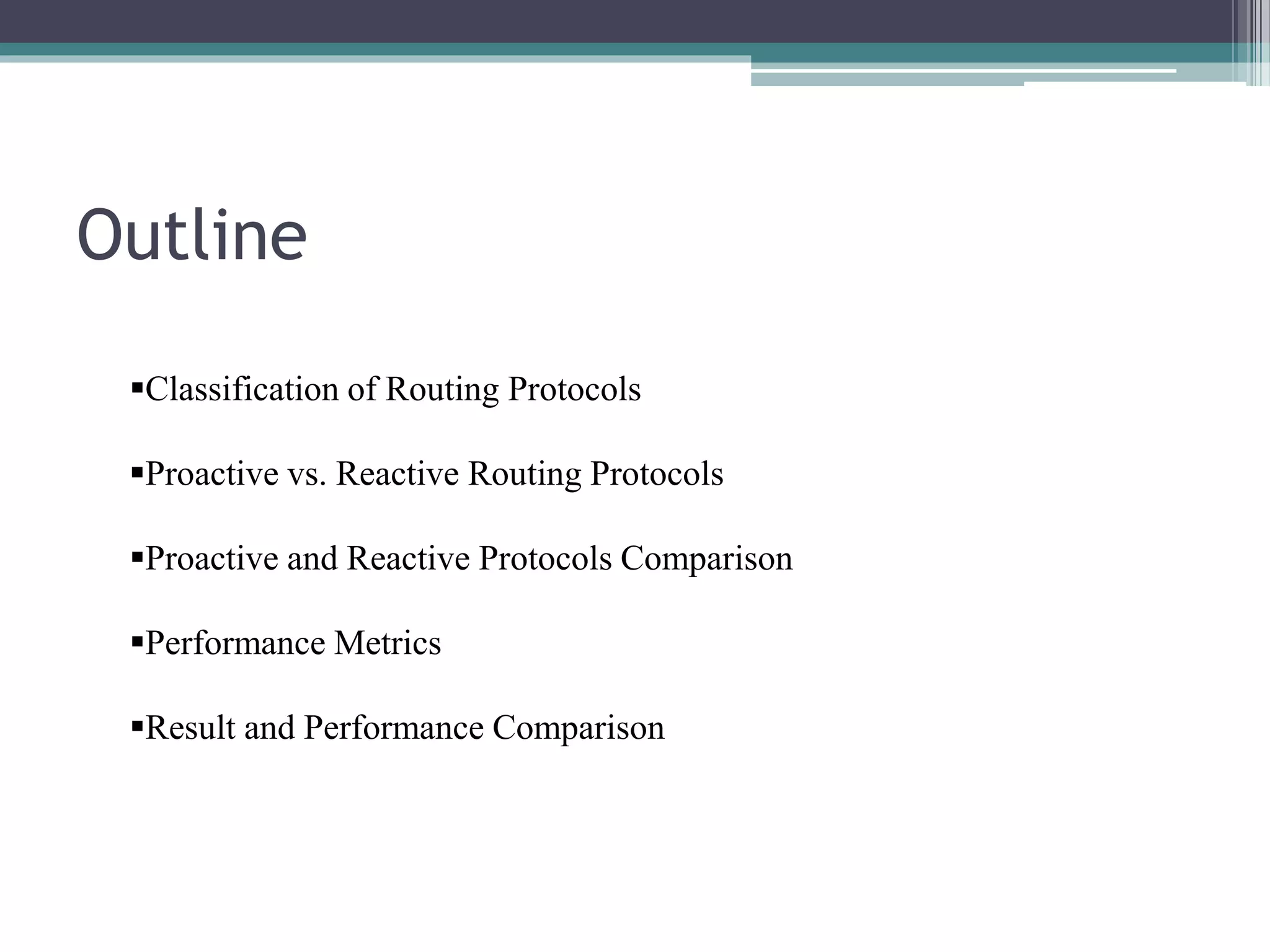
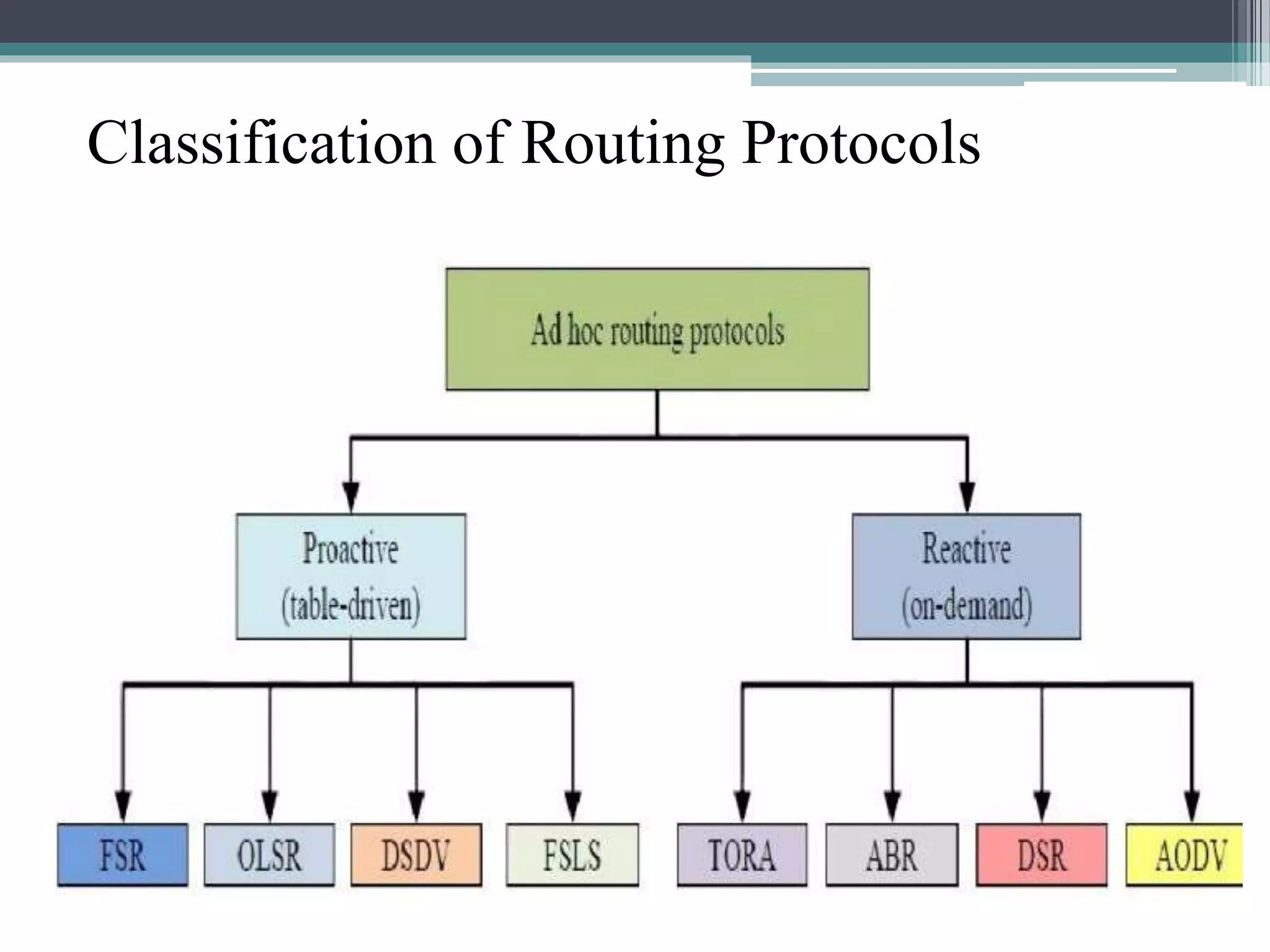
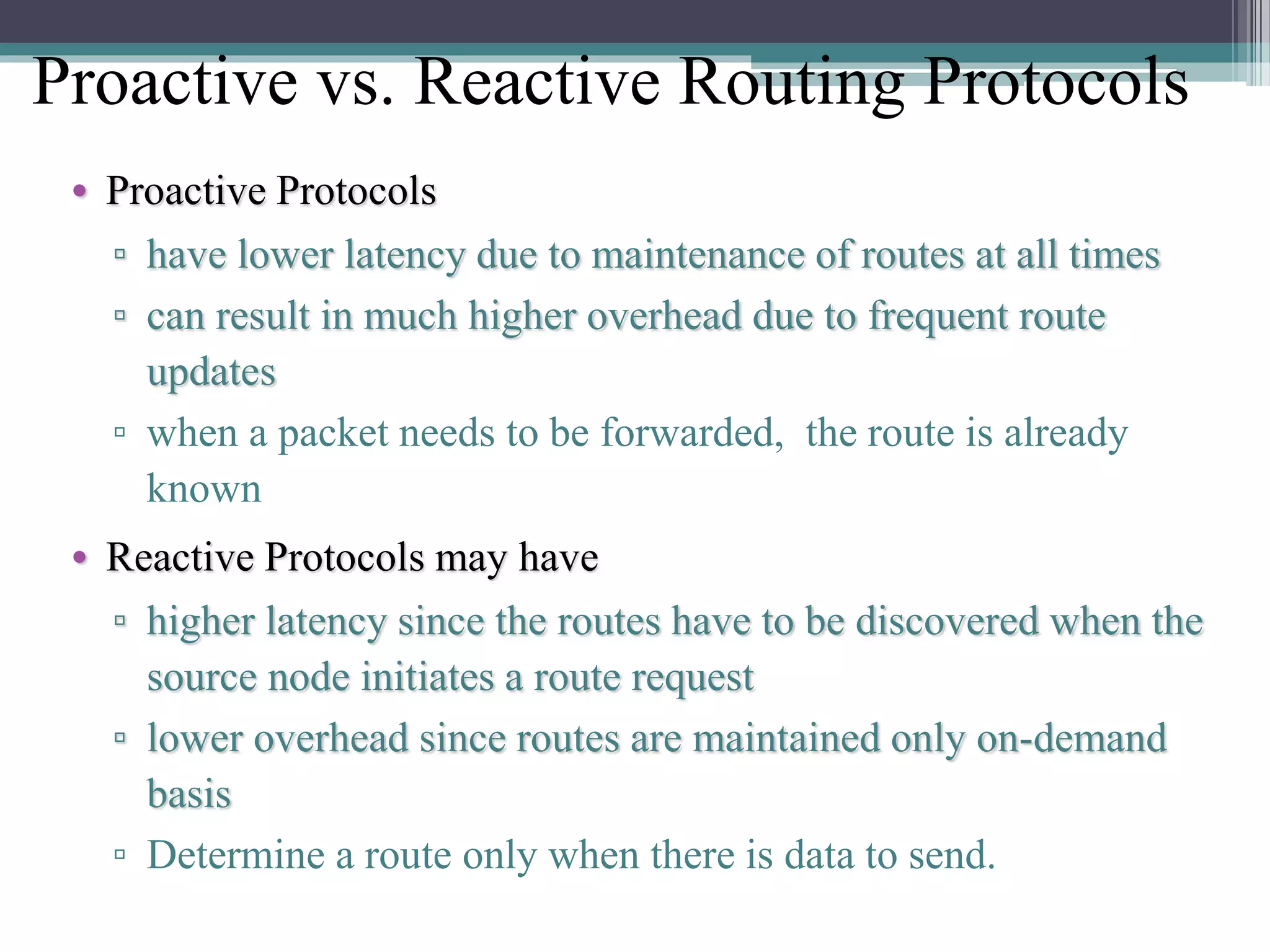

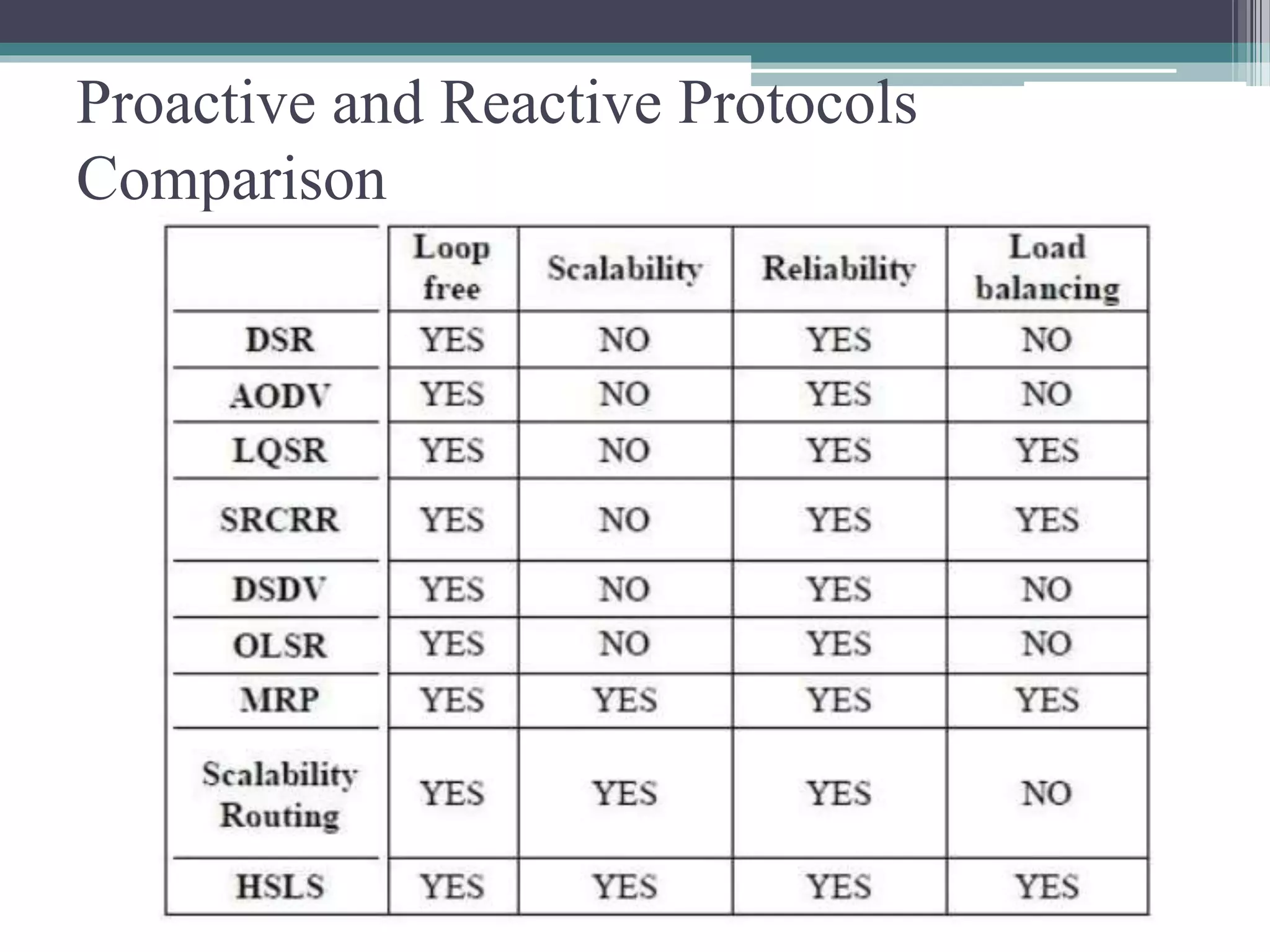
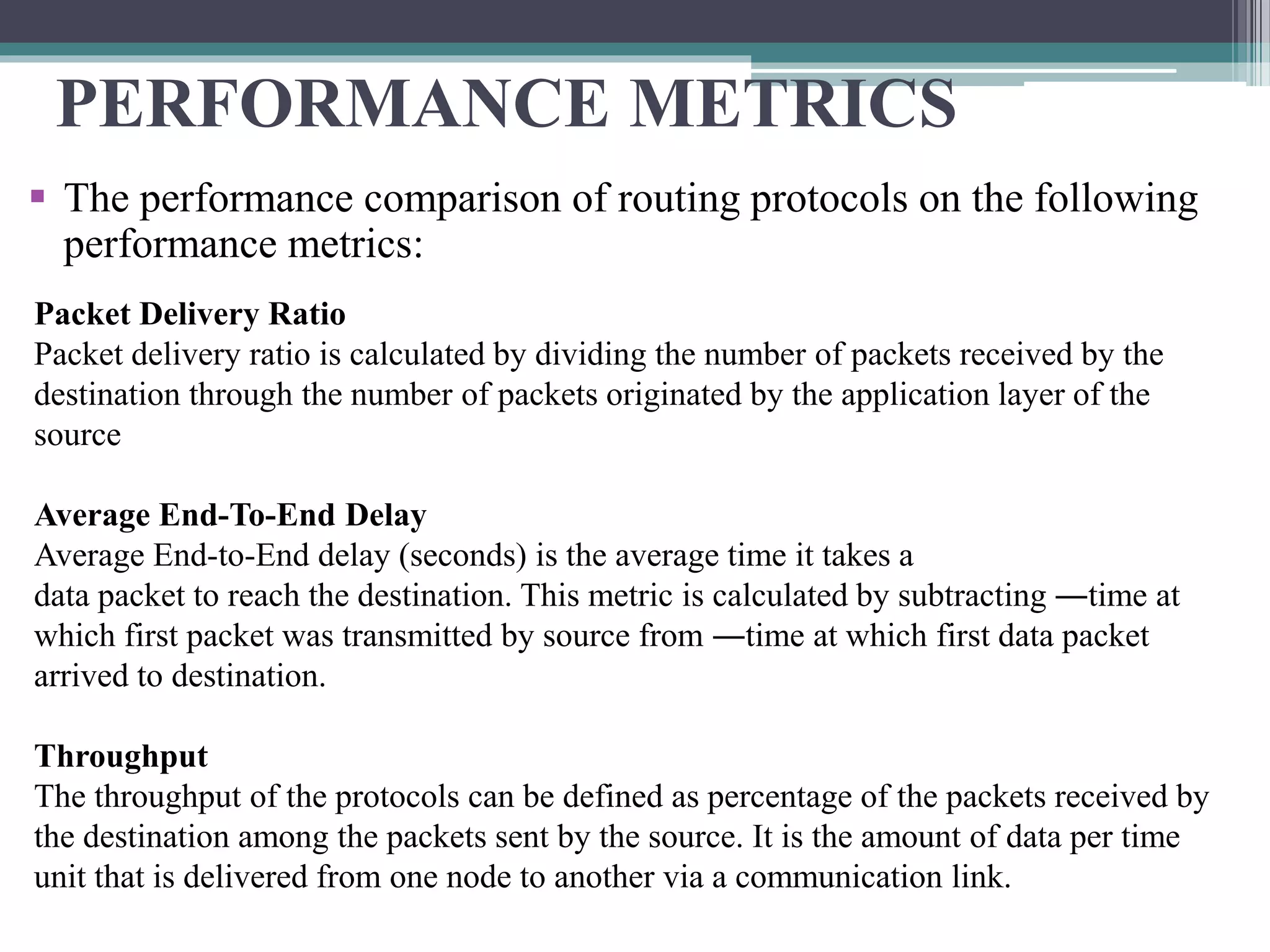
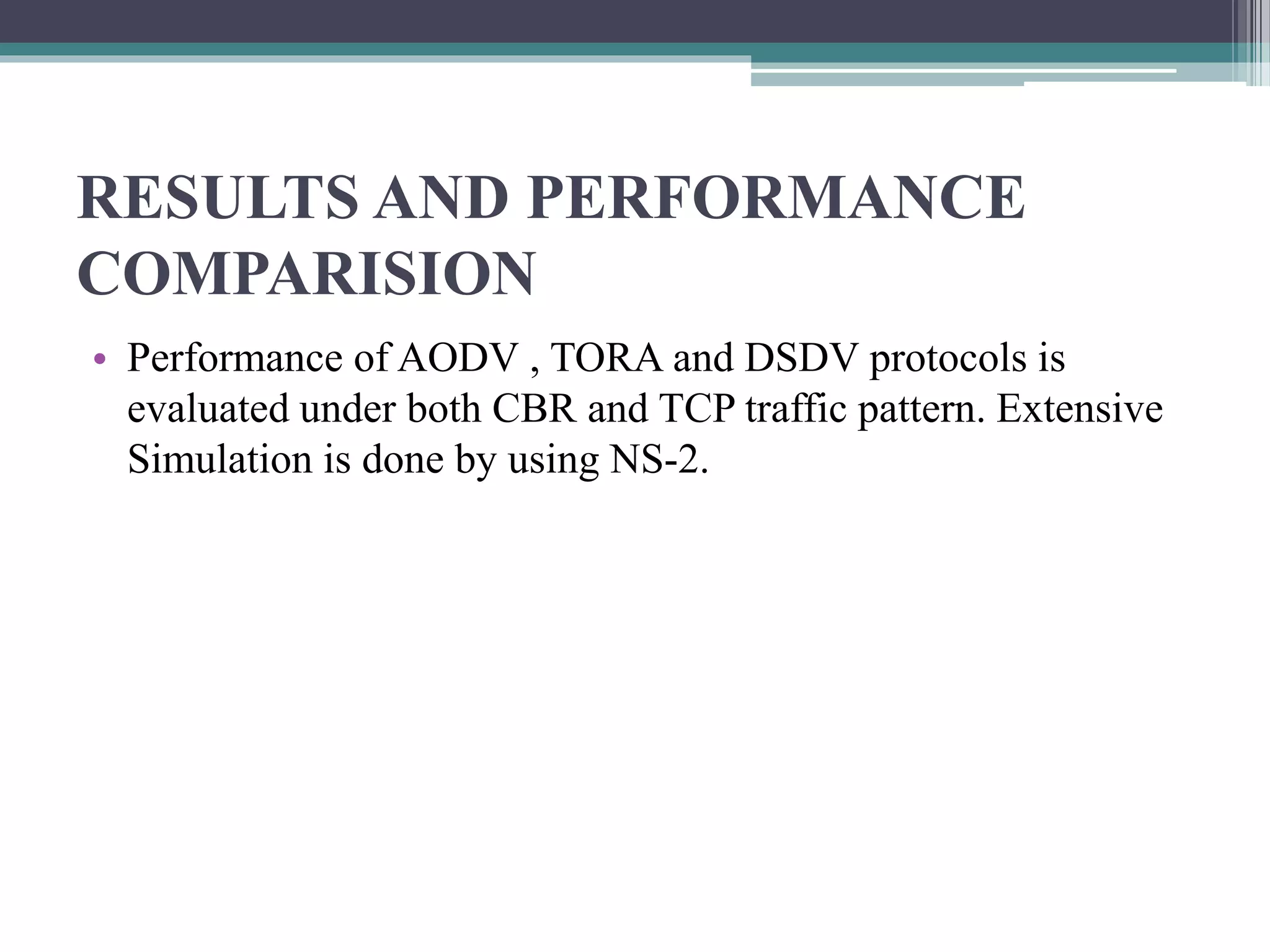
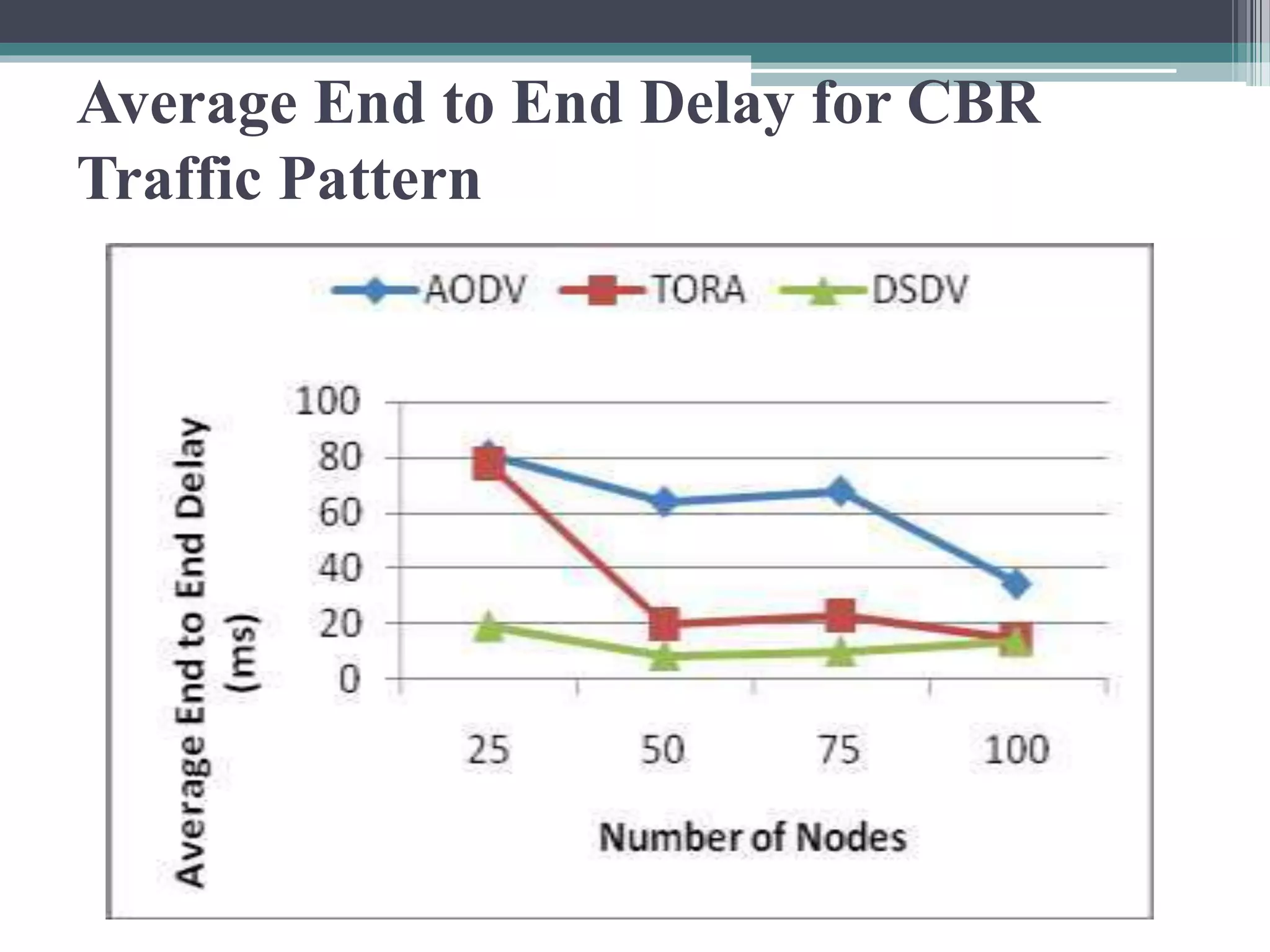
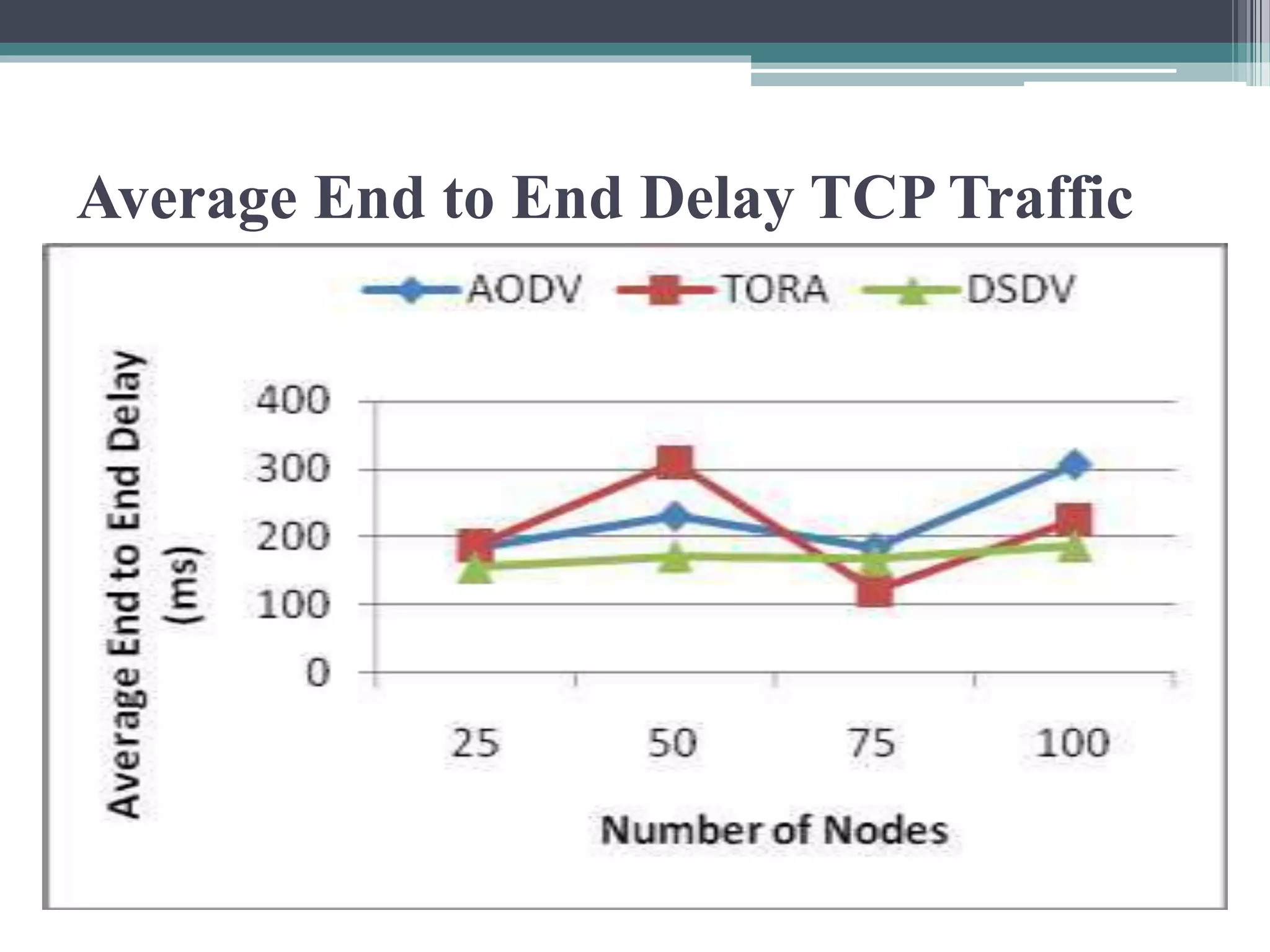
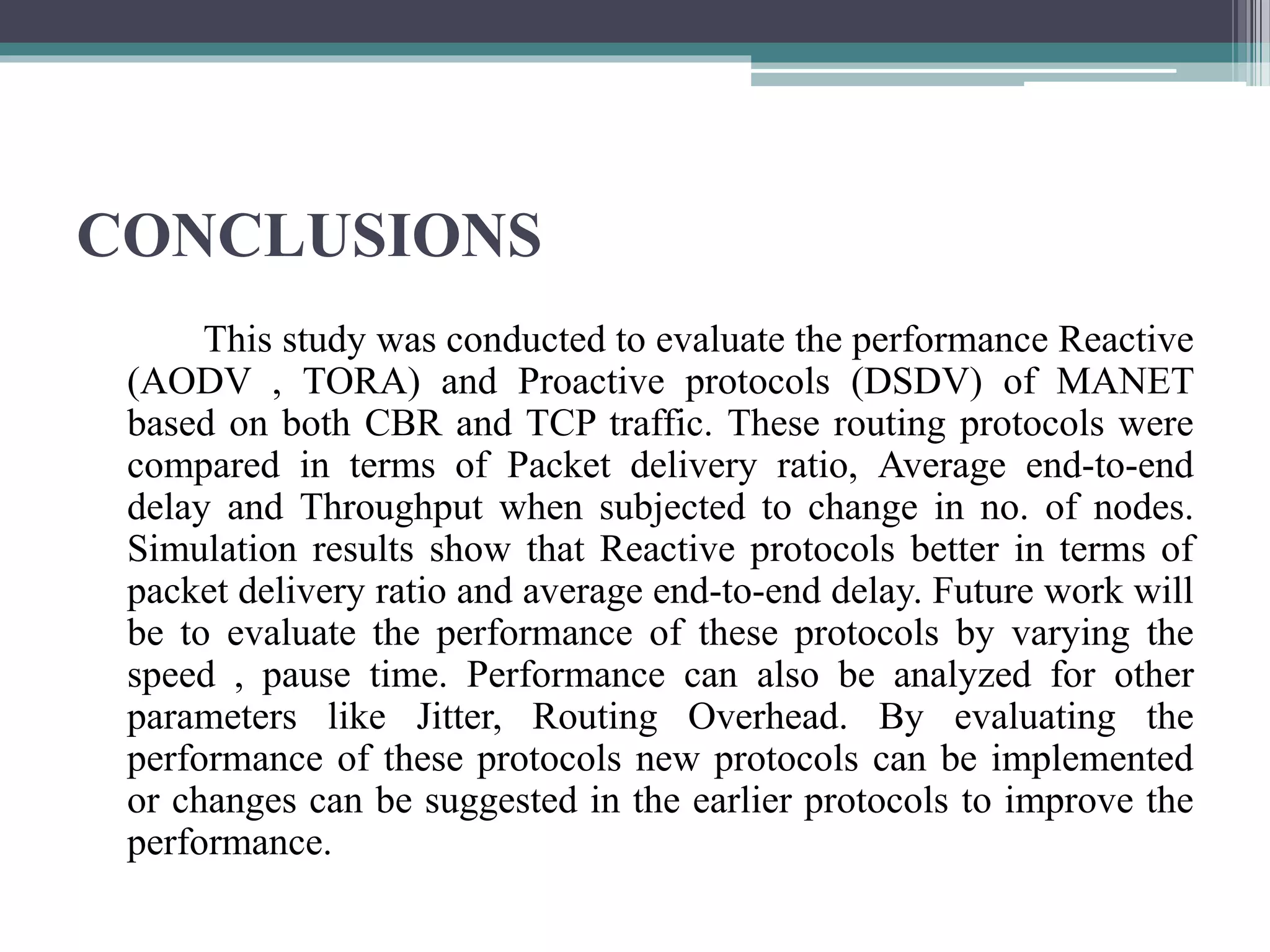
![[1] Mazhar H malik Department of informatics Universita Ca’ Foscari Venezia,
Italy malik@dsi.unive.it “Performance Analysis of Proactive and Reactive
Protocols in Mobile Ad-hoc Networking: A Simulation based Analysis” 2014, IEEE
[2] Vikas Singla, Department of Information Technology “Traffic Pattern based
performance comparison of Reactive and Proactive protocols of Mobile Ad-hoc
Networks”, 2010 International Journal of Computer Applications
REFERENCES](https://image.slidesharecdn.com/group2manet-150825133744-lva1-app6891/75/proactive-and-reactive-routing-comparisons-12-2048.jpg)
